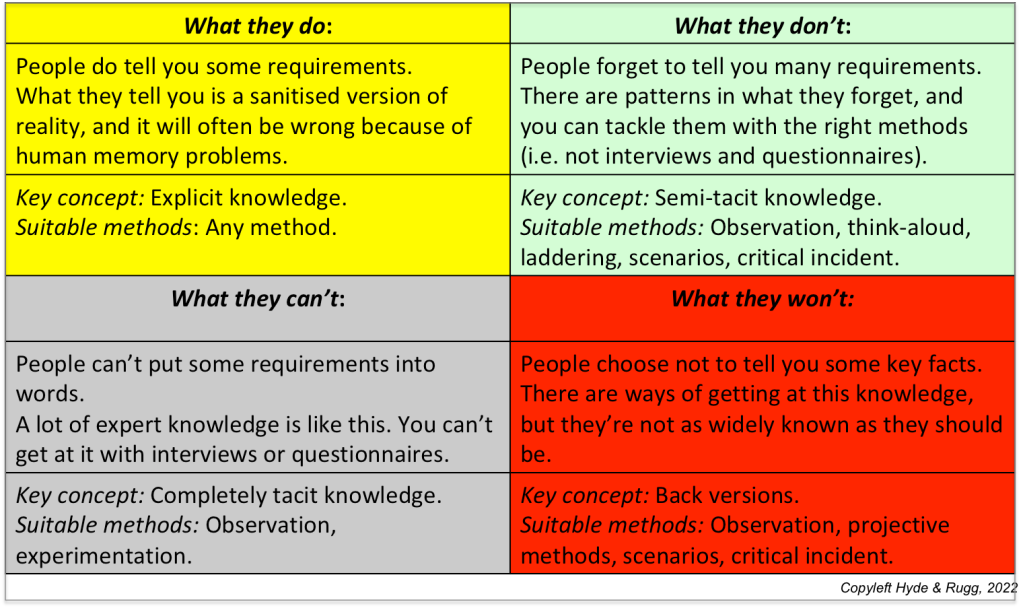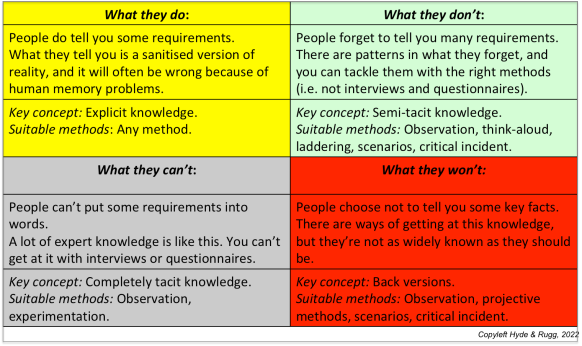By Gordon Rugg and Sue Gerrard
This is the third post in a short series on semi-tacit and tacit knowledge. The first article gave an overview of the topic, structured round a framework of what people do, don’t, can’t or won’t tell you. The second focused on the various types of do (explicit) and don’t (semi-tacit) knowledge. Here, we look at can’t (strictly tacit) and won’t knowledge.
The issues involved are summed up in the diagram below.


